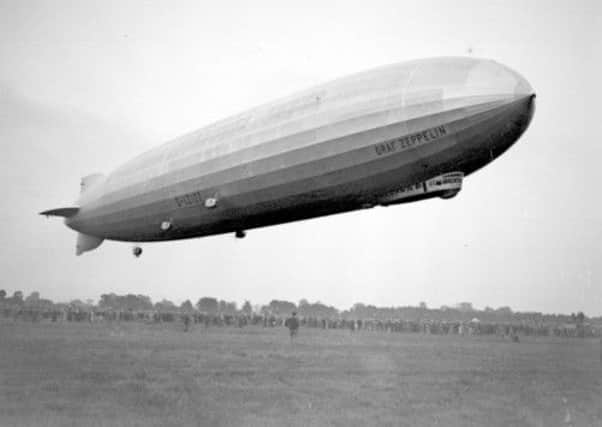Wurst of times... Researchers reveal Great War sausage ban on Germans


Zeppelin airships were a key weapon for the Germans during the 1914 to 1918 war but production placed a huge demand on cow guts, used to make gas holding cells.
It took more than 250,000 cows to make a single airship and the animals’ intestines became so precious that making the popular bratwurst and other sausages was temporarily made illegal in areas under German control.
Advertisement
Hide AdAdvertisement
Hide AdDetails of the sausage ban were uncovered by researchers who were working on a Channel 4 documentary.
For the programme, Dr Hugh Hunt, a University of Cambridge engineer, examined the role of the Zeppelin in the war, which foreshadowed the Blitz by bringing war to British civilians for the first time in centuries.
He studied how the silent aircraft were built and how the British adapted to their threat.
“One of the most intriguing things about the Zeppelins is that we don’t have a huge amount of information about how they were built, nor about how they were destroyed,” he said.
Advertisement
Hide AdAdvertisement
Hide Ad“But while shooting down a massive hydrogen balloon sounds pretty easy, actually it was quite the opposite.
“For the best part of two years, these things were able to fly over Britain, dropping bombs and causing havoc.”
Records have long suggested that the Germans used cow intestines to contain the hydrogen needed to make them fly but it had never been clear how this was achieved.
Dr Hunt and his colleagues visited a sausage factory in Middlesbrough where they worked out that by making sausage skins wet, stretching them and allowing them to dry again, they could be bonded together to form ideal vessels for gas.
Advertisement
Hide AdAdvertisement
Hide AdConceived as a way to break British civilian morale, the Zeppelin raids never caused enough casualties to alter the course of the war.
But for civilians who witnessed them, the attacks, which began in January 1915, were shocking.
London’s East End and other towns in east and southern England, including Hull, King’s Lynn and Great Yarmouth, were targeted.
Because of their stealth, the attacks were difficult to counter and when the raids ended in 1917, 77 of the 115 German airships had been shot down but 1,500 British citizens had been killed.